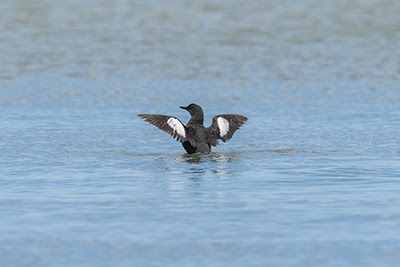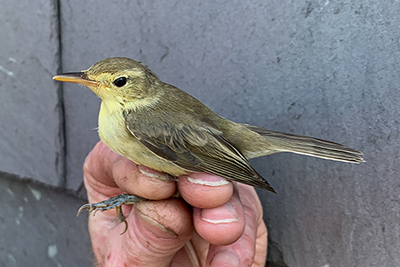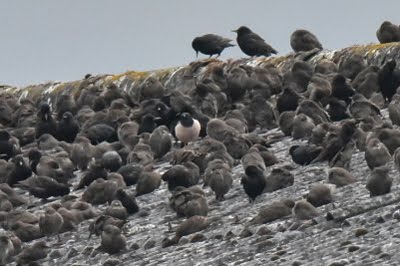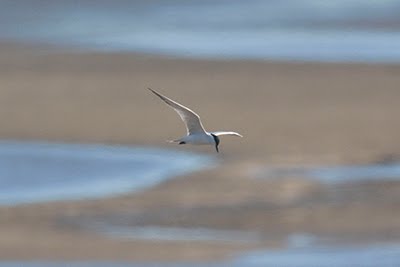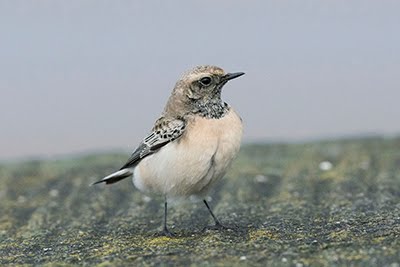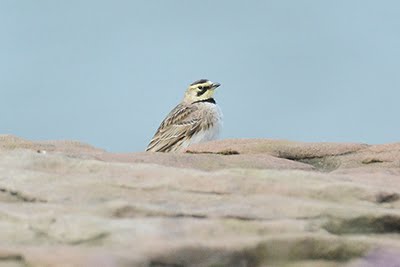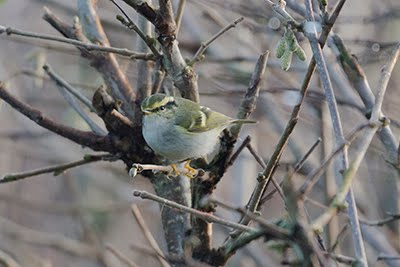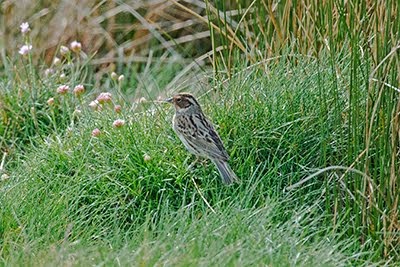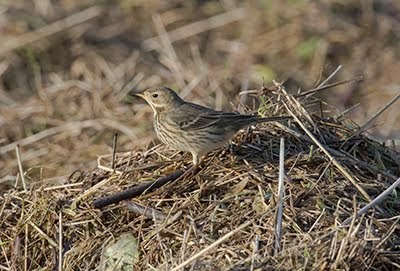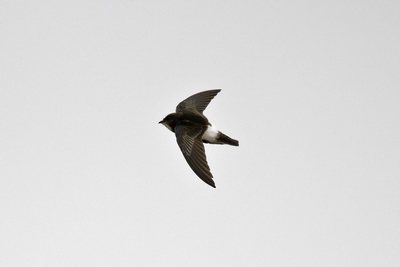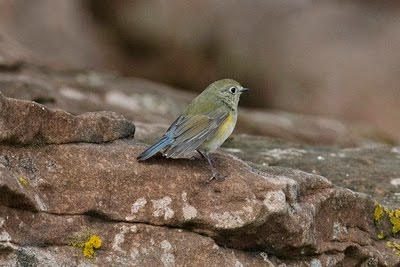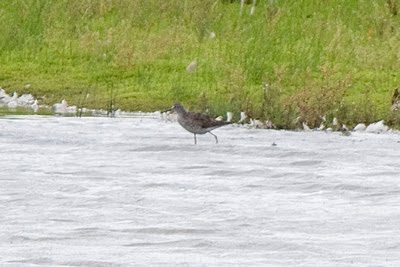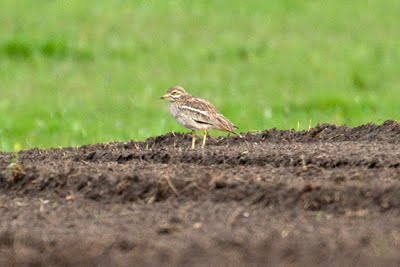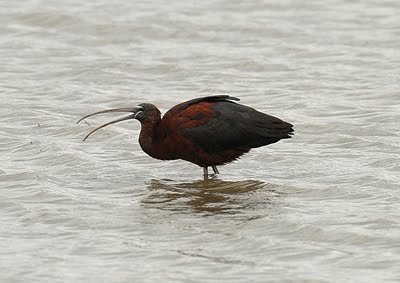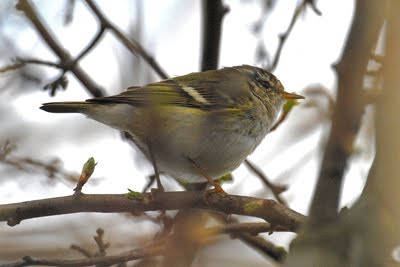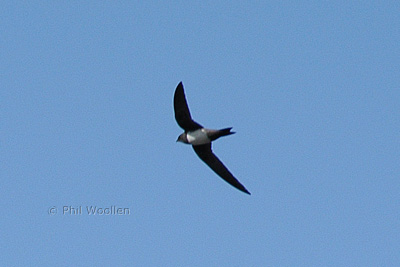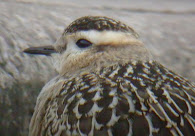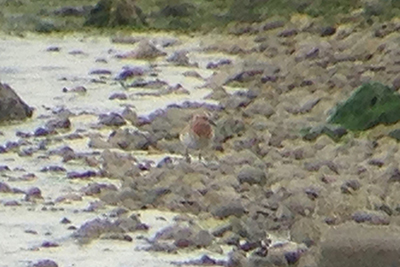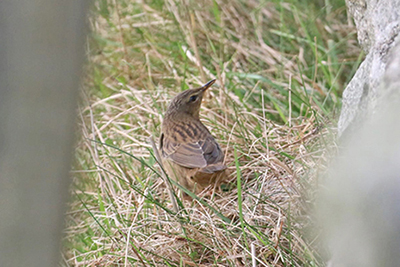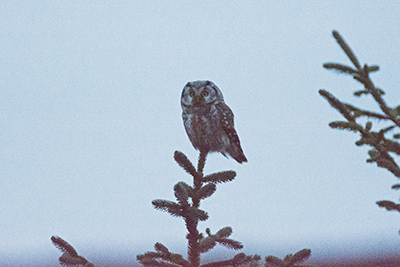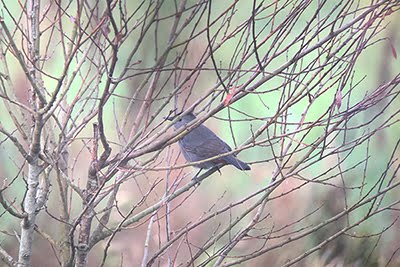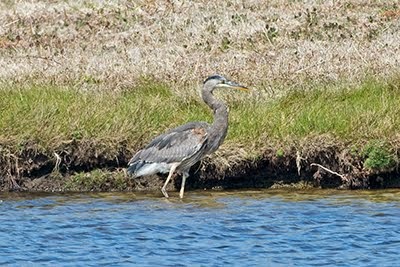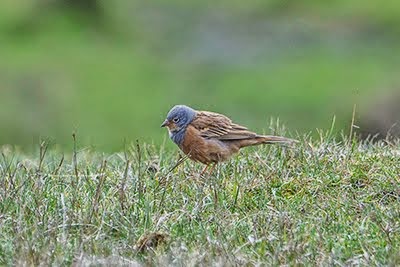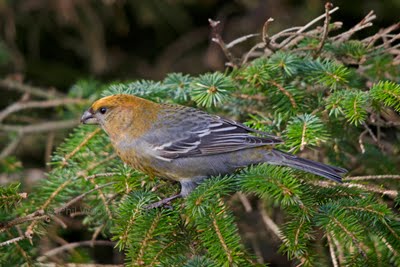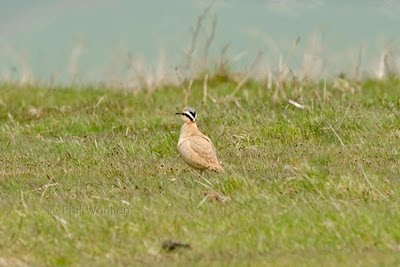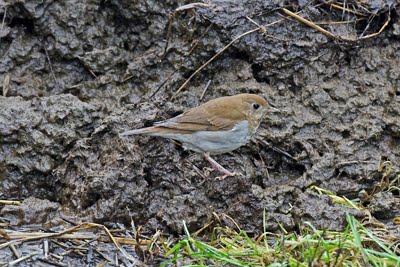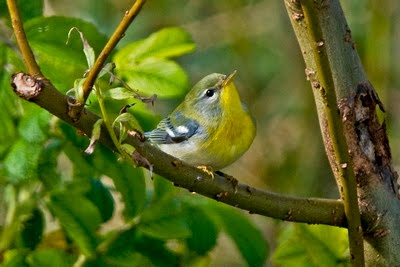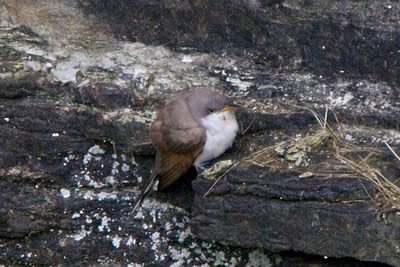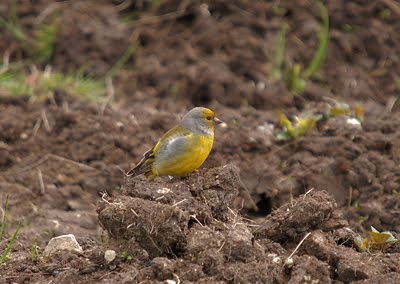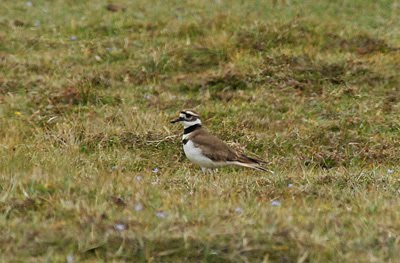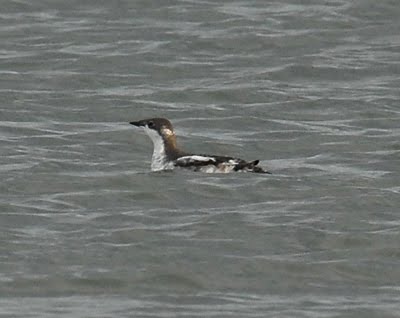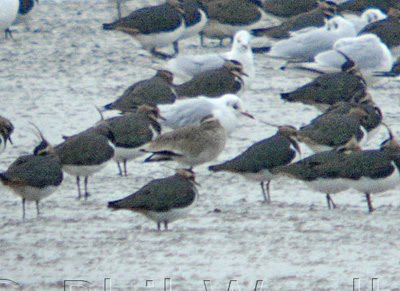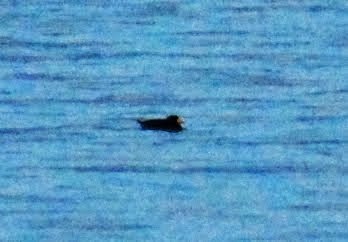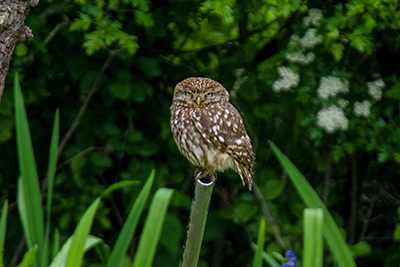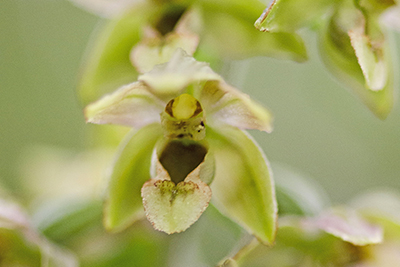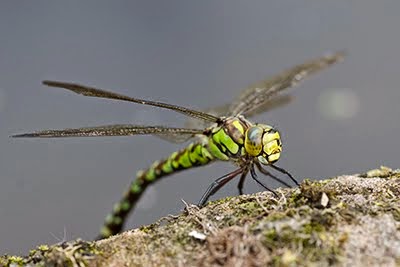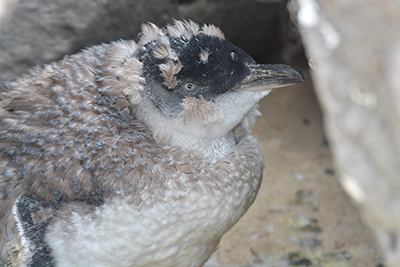Those of a certain age, like me, will remember a children's TV cartoon staring Dick Dastardly and his side kick Muttley in the spin off from 'Wacky Race's called 'Stop that Pigeon' where the mission was to stop Yankee Doodle Pigeon from delivering mail. Dastardly Dick came up with numerous Dastardly plans to try and stop that pigeon to no avail
We'd planned a holiday to Mauritius with a view to just enjoying the tropical warmth, good food and a relaxing time on the beach and in the sea. Of course, being a birder, a was well aware that Mauritius held a number of endemic species and I hatched my own dastardly plan to try and catch up with a few - including that pigeon - Mauritius Pink Pigeon.
Armed with information from Fred & Jason I'd worked out the best place to go to maximise my chances of catching up with this highly endangered species along with Echo Parakeet & Mauritius Kestrel. The plan was to spend some time in th Black Gorges National Park, the only large area of natural growth rain forest left on Mauritius and, specifically the Petrin visitors centre and the Macchabee Forrest Loop.
Before we left for Mauritius I'd contacted two guiding companies - one never replied and the other let me down a week before our trip. Fred suggested getting a taxi and letting him wait for me whilst I birded the trail. Contacting a taxi company they agreed to pick me up at 06.15 from our hotel and drop me off and then wait until I'd finished - all for the sum of £50!
There is a captive breeding and release programme for both Pink Pigeons and Echo Parakeets to boost numbers in the wild and the pigeon release pens are behind the visitor centre. The feeders there also attract non-native species such as Madagascan Fody, Common Waxbill and Village Weaver.
 |
| Common Waxbill |
 |
| Mauritian Fody |
 |
| Village Weaver nest building |
Unfortunately the weather closed in whilst I was there and I got soaked. The rain was warm though and I carried on birding the trail hoping to catch up with some of the specialities. From the numerous viewpoints I picked up a Mauritius Kestrel perched brifely before it flew off towards clearer skies - my 2nd of the trip as we'd had one perched ona telgraph pole whilst driving from the airport to the hotel near Bel Ombre nature reserve.
Picking up an unfamiliar song whilst sheltering beneath a tree from a particularly heavy shower I was pleased to find another target species directly in front of me but always hard to see - Mauritian Bulbul.
With the rain easing I carried on dow nthe trail and soon picked up the distinctive 'Kark, Kark' call of the endemic Echo Parakeet. Unfortunately Rose-ringed Parakeets have been introduced to the island so the only way to be sure of the species you are seeing is by hearing it call. I found a small group consisting of a male, female and what appeared to be a recently fledged youngster. Female Echo Parakeets have an all dark bill - unlike female Rose-ringed Parakeets. In this respect I found a mistake on in the guide book I'd bought for our previous trip to The Maldvies.
 |
| Female Echo Parakeet |
 |
| Male Echo parakeet |
Another break in the weather produced a sudden flurry of bird movement and I found a Pink Pigeon perched up close to the track where it sat staring at me until I moved on as my attention was drawn to another target endemic as a Mascarene Paradise Flycatcher flew past almost level with my eyes never to be seen again.
The clearer skies also meant hirundines had started flying around and I soon picked up Mascarene Swiftlet to add to the Mascarene Martins seen flying around our hotel. With time pressing I started on the return loop back to the car park adding both endemic Mauritius Olive White-eye and Mauritius Cuckoo Shrike to th trip list. Luckily Igot back to the taxi just as the heavens opened again.
Our hotel grounds were teeming with birds and from our balcony we were often visited by the ubiquitous and non-native Red-cheeked Bulbul as well as the occasional family group of endemic Mauritius Grey White-eye.
The hotel grounds were home to a large colony oof the beautiful Mauritius Fruit bats and they were seen daily feeding on the fruits of the Banyan Trees. Every morning the staff swept up the remains of the bats meals they'd dropped but before they did so it gave an opportunity for me to catch up with a few more species taking advantage of the dropped food. Yellow-eyed Canary, Spotted Dove, Zebra Dove and Madagascan Turtle Dove.
There aren't a huge amount of birds to see on Mauritius and I recorded 26 species of which 14 were lifers. Mauritius is a beautiful island and steps are being made to conserve their endemic fauna and flora. A lot of bird species have been introduced over the years. The scenery is spectacular and we also took a boat trip out to look at dolphins and snorkel o na reef. I had mixed feelings bout booking the dolphin trip until i found out the Mauritian Government control such activities very strictly and boats are only allowed to approach dolphins between 07-10am every day. We were lucky enough to see migrating Bottle-nosed Dolphins and the boat we were on kept a respectable distance and allowed the dolphins to come to us.
Mauritius is famous for the now extinct Dodo and everywhere we went souvenir Dodo's were being sold A poignant reminder of how fragile these small island ecosystems are.
































%20Rosella%20juv%20251023.png)















